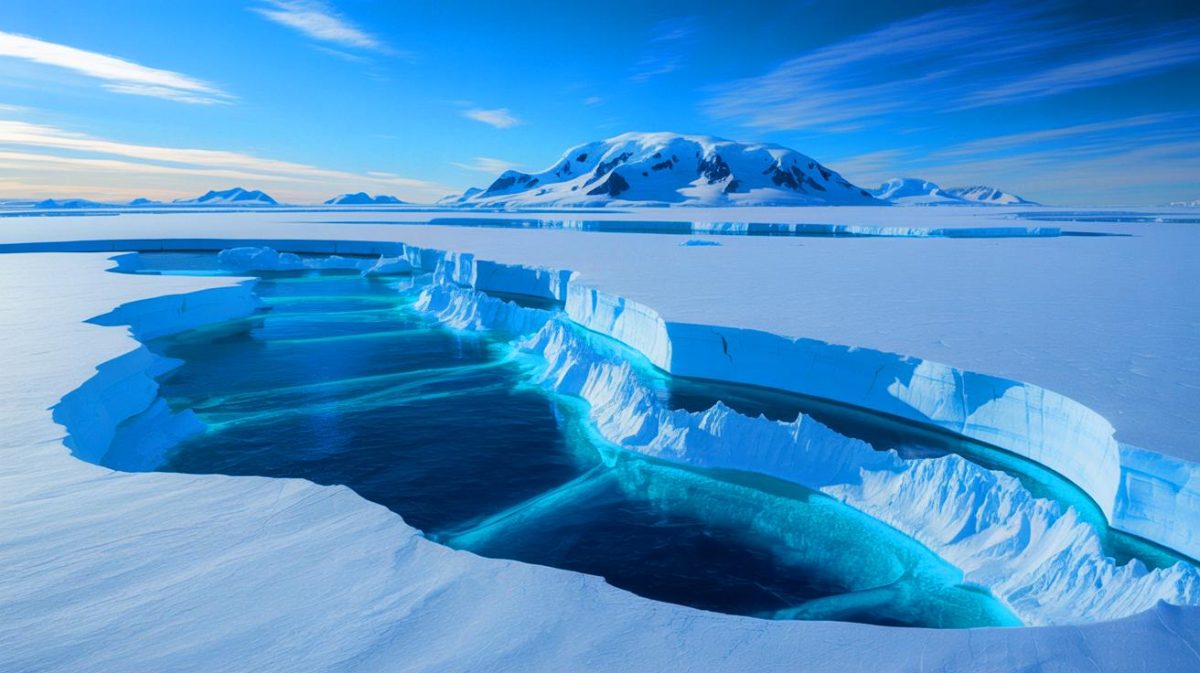| IN A NUTSHELL |
|
The remote and largely unexplored continent of Antarctica holds a wealth of geological secrets beneath its icy surface. Among these are the Transantarctic Mountains, an ancient range that stretches over 2,175 miles and plays a significant role in shaping the continent’s ice flow and thickness. These mountains, estimated to be 500 million years old, provide a natural divide between two geologically distinct regions of Antarctica. As researchers delve into this hidden world, they uncover fascinating stories about Earth’s climate history and geological activity, offering insights that could impact our understanding of future climate changes.
A Natural Barrier Beneath the Ice
The Transantarctic Mountains serve as a critical geological barrier, dividing the stable craton to the east from the active rift system to the west. This division has been crucial in shaping the geological evolution of Antarctica over millions of years. The mountains themselves have undergone numerous cycles of erosion and uplift, which scientists have studied through rock samples. These samples reveal a rich history of mountain-building events that are closely linked to tectonic activities.
By employing techniques such as thermochronology, researchers have been able to date these geological phenomena, uncovering periods of significant activity that coincide with major glaciation events around 300 million years ago. This research offers a unique perspective on the dynamic processes that have sculpted Antarctica’s landscape, providing vital insights into both its past and potential future.
The Influence of Mountains on Ice Flows
Despite being buried beneath thick layers of ice, the Transantarctic Mountains play a crucial role in guiding the flow of glaciers. Acting like invisible rails, the peaks and valleys of this range channel the massive ice rivers, affecting their speed and accumulation. Understanding how these geological features interact with ice is essential for comprehending the evolution of polar ice caps. Recent studies have even suggested the presence of an older mountain range beneath East Antarctica, revealed through gravimetric and magnetic anomalies.
The discovery of fossilized trees and other remnants from a warmer period in Antarctica’s history provides further clues about past climates. These findings are instrumental in reconstructing the continent’s climatic history and predicting how it may respond to ongoing environmental changes. Such research is vital for developing accurate models of future climate scenarios.
Unveiling Geological Mysteries Through Modern Science
The exploration of Antarctica’s hidden geological features is a testament to the advancements in modern scientific techniques. Methods such as thermochronology and gravimetric analysis allow scientists to delve into the deep history of the planet. By examining mineral samples, researchers can construct a timeline of tectonic activities and glaciation cycles, shedding light on Earth’s geological past.
This research highlights the dynamic nature of the planet’s geology. As scientists continue to study these ancient formations, they not only uncover the secrets of Antarctica but also enhance our understanding of global geological processes. The implications of these discoveries extend far beyond the icy continent, offering insights into the forces that have shaped the planet over millions of years.
The Impact of Discoveries on Climate Understanding
The buried geological features of Antarctica have significant implications for our understanding of climate change. The interaction between these ancient mountains and the overlying ice sheets can influence global sea levels and climate patterns. By studying these formations, scientists gain a better understanding of how Antarctica’s ice might react to a warming world.
The discovery of fossilized plant life and other evidence of historical climates aids scientists in developing models to predict future changes. These insights are crucial for preparing for the potential impacts of climate change. As research progresses, one question remains: How will the revelations from Antarctica’s hidden world shape our understanding of global climate dynamics?
As the scientific community continues to unlock the secrets of Antarctica’s geological past, the findings offer a glimpse into the continent’s dynamic history and its potential future. How will these revelations influence our strategies for addressing global climate challenges?
Did you like it? 4.5/5 (25)







Wow, I never knew there were mountains beneath all that ice! 😮
How long did it take for scientists to discover this ecosystem? Sounds incredible!